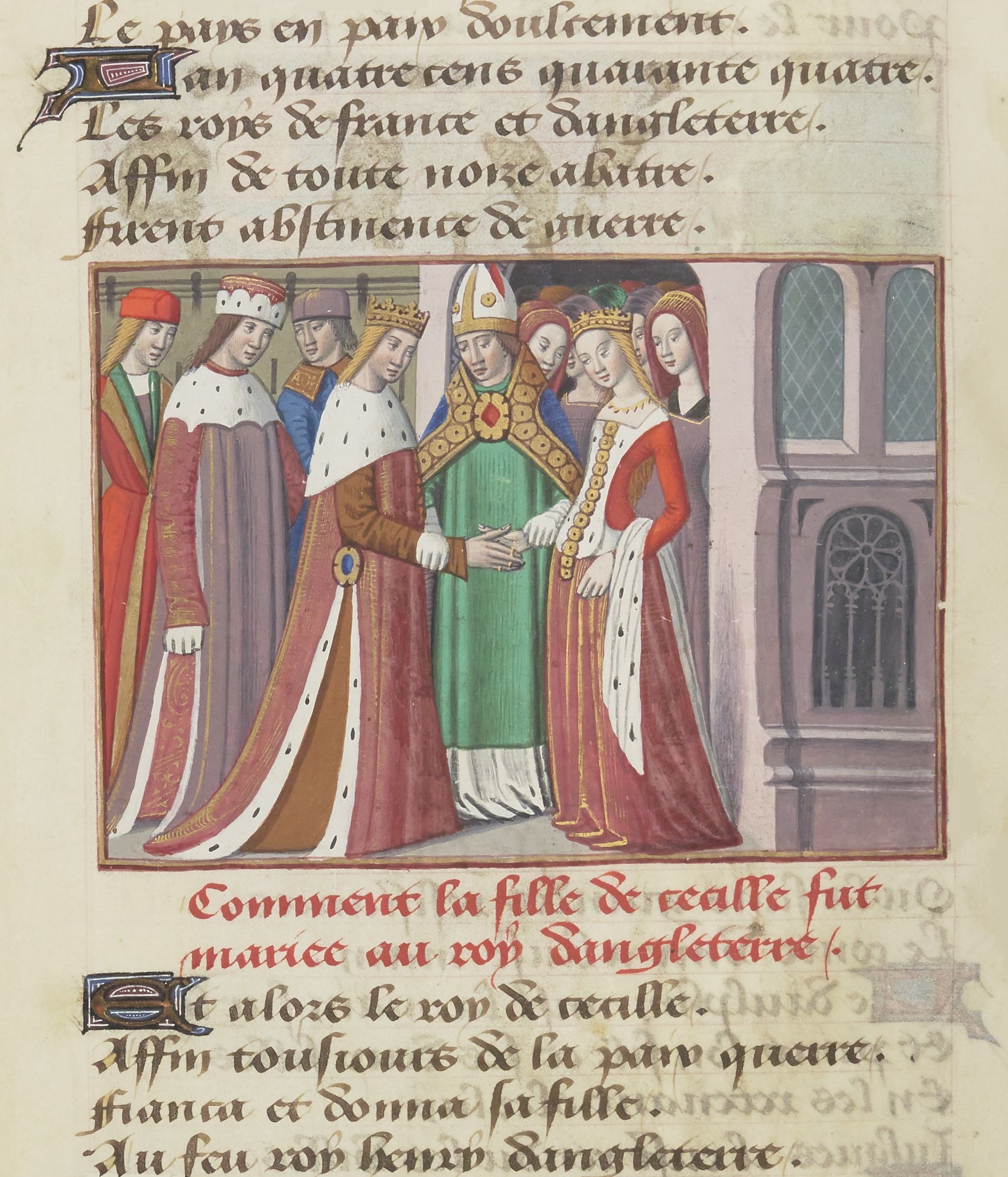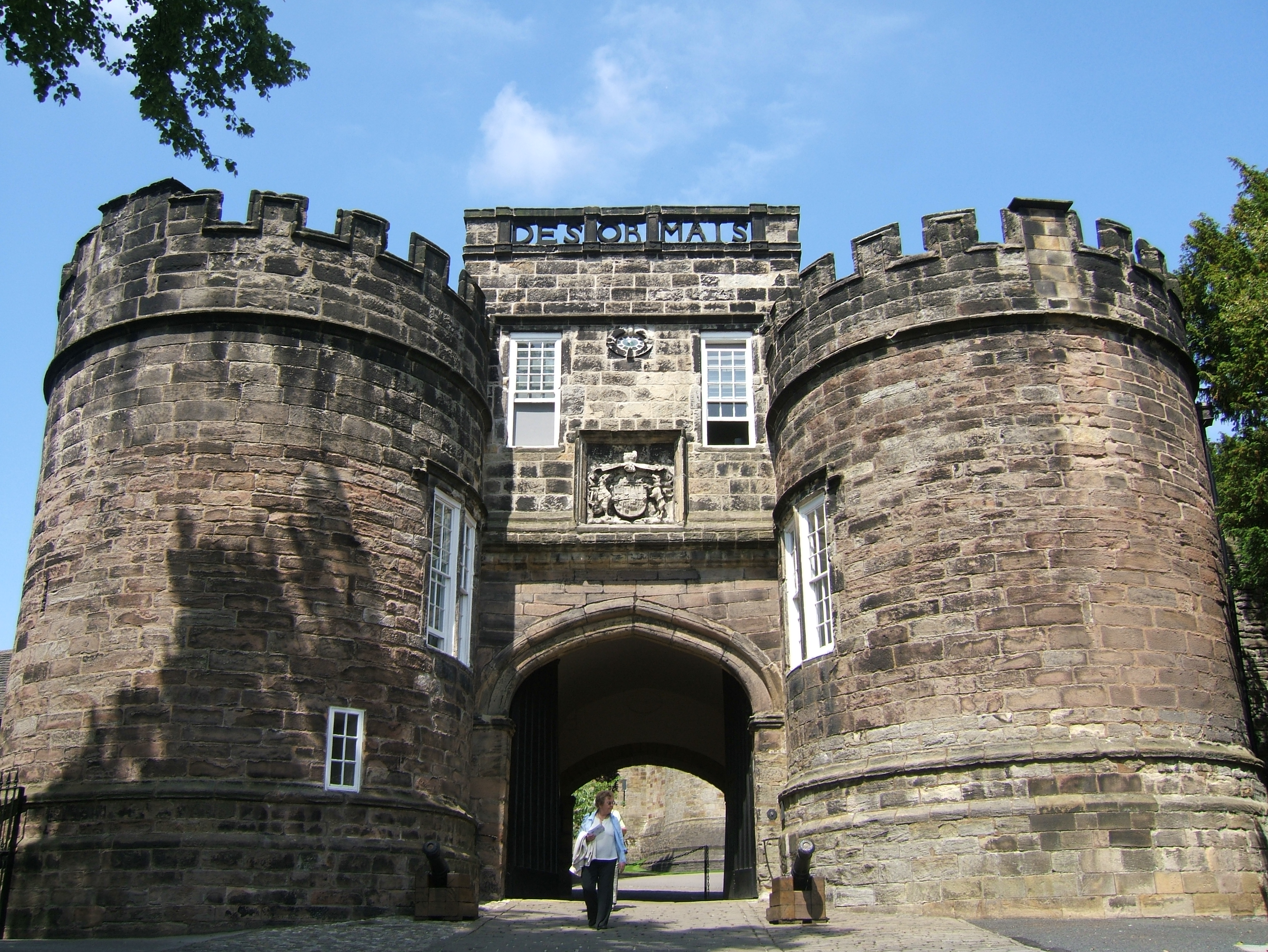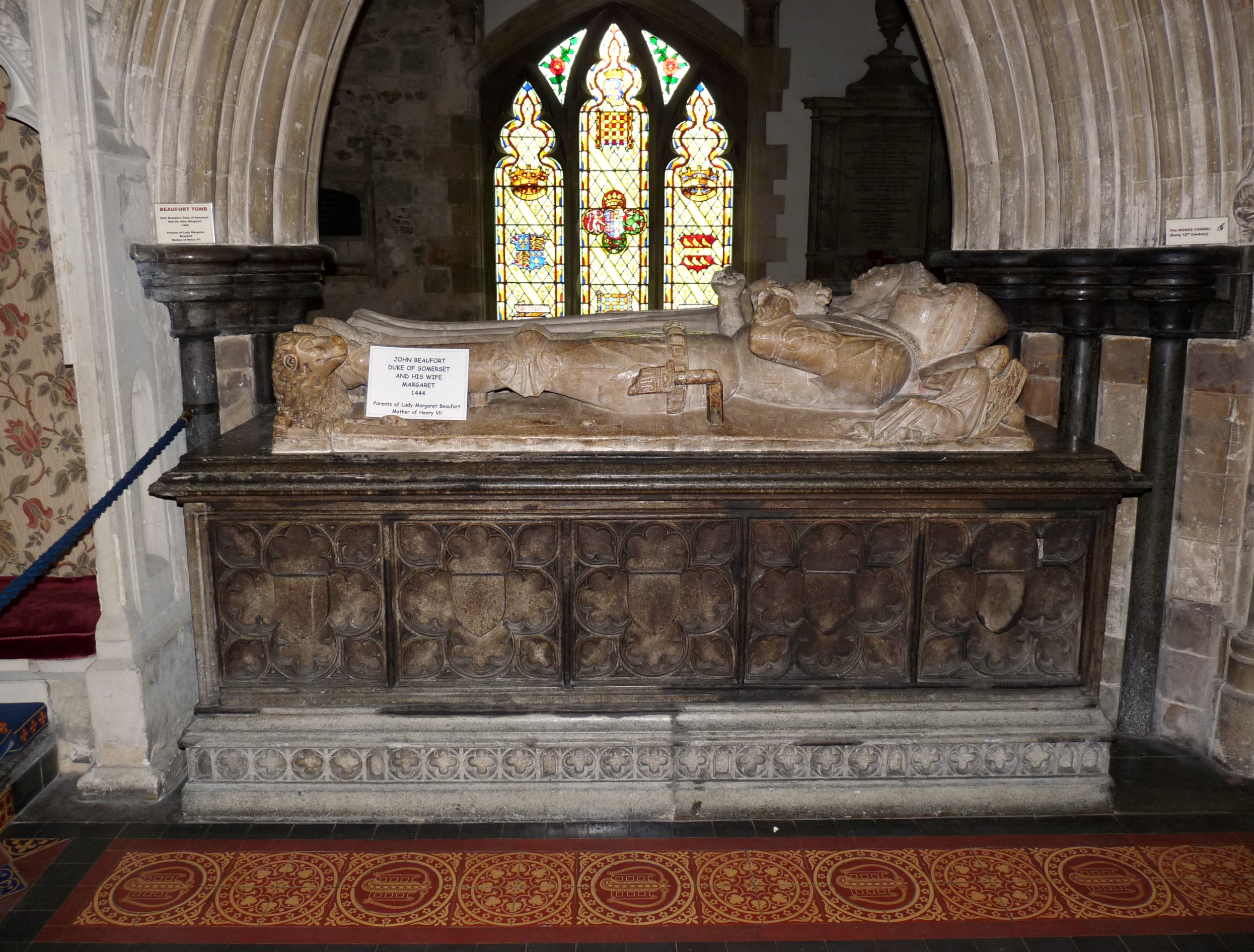|
Henry VI Part 2
''Henry VI, Part 2'' (often written as ''2 Henry VI'') is a Shakespearean history, history play by William Shakespeare believed to have been written in 1591 and set during the lifetime of King Henry VI of England. Whereas ''Henry VI, Part 1'' deals primarily with the Hundred Years' War#French victory: 1429–1453, loss of England's French territories and the political machinations leading up to the Wars of the Roses, and ''Henry VI, Part 3'' deals with the horrors of that conflict, ''2 Henry VI'' focuses on the King's inability to quell the bickering of his nobles, the death of his trusted adviser Humphrey, Duke of Gloucester, the rise of the Richard of York, 3rd Duke of York, Duke of York and the inevitability of armed conflict. As such, the play culminates with the opening battle of the War, the First Battle of St Albans (1455). Although the ''Henry VI'' trilogy may not have been written in chronological order, the three plays are often grouped together with Richard III (play ... [...More Info...] [...Related Items...] OR: [Wikipedia] [Google] [Baidu] |
Margaret Of Anjou
Margaret of Anjou (french: link=no, Marguerite; 23 March 1430 – 25 August 1482) was Queen of England and nominally Queen of France by marriage to King Henry VI from 1445 to 1461 and again from 1470 to 1471. Born in the Duchy of Lorraine into the House of Valois-Anjou, Margaret was the second eldest daughter of René, King of Naples, and Isabella, Duchess of Lorraine. Margaret was one of the principal figures in the series of dynastic civil wars known as the Wars of the Roses and at times personally led the Lancastrian faction. Some of her contemporaries, such as the Duke of Suffolk, praised "Her valiant courage and undaunted spirit" and the 16th-century historian Edward Hall described her personality in these terms: "This woman excelled all other, as well in beauty and favour, as in wit and policy, and was of stomach and courage, more like to a man, than a woman." Owing to her husband's frequent bouts of insanity, Margaret ruled the kingdom in his place. It was she w ... [...More Info...] [...Related Items...] OR: [Wikipedia] [Google] [Baidu] |
Richard Neville, 5th Earl Of Salisbury
Richard Neville, 5th Earl of Salisbury (1400 – 31 December 1460) was an English nobleman and magnate based in northern England who became a key supporter of the House of York during the early years of the Wars of the Roses. He was the father of Richard Neville, 16th Earl of Warwick, the "Kingmaker". Origins He was born in 1400 at Raby Castle in County Durham, the third son (and tenth child) of Ralph de Neville, 1st Earl of Westmorland, by his second wife, Joan Beaufort, the youngest of the four legitimised children and only daughter of John of Gaunt, 1st Duke of Lancaster (third surviving son of King Edward III), by his mistress, later wife, Katherine Swynford. The Neville lands were primarily in County Durham and Yorkshire, but both King Richard II and King Henry IV (Joan's cousin and half-brother respectively) found the family useful to counterbalance the strength of the Percys on the Scottish Borders. This led to Ralph's earldom being granted in 1397, and to his ... [...More Info...] [...Related Items...] OR: [Wikipedia] [Google] [Baidu] |
Richard III Of England
Richard III (2 October 145222 August 1485) was King of England and Lord of Ireland from 26 June 1483 until his death in 1485. He was the last king of the House of York and the last of the Plantagenet dynasty. His defeat and death at the Battle of Bosworth Field, the last decisive battle of the Wars of the Roses, marked the end of the Middle Ages in England. Richard was created Duke of Gloucester in 1461 after the accession of his brother King Edward IV. In 1472, he married Anne Neville, daughter of Richard Neville, 16th Earl of Warwick. He governed northern England during Edward's reign, and played a role in the invasion of Scotland in 1482. When Edward IV died in April 1483, Richard was named Lord Protector of the realm for Edward's eldest son and successor, the 12-year-old Edward V. Arrangements were made for Edward V's coronation on 22 June 1483. Before the king could be crowned, the marriage of his parents was declared bigamous and therefore invalid. Now officially i ... [...More Info...] [...Related Items...] OR: [Wikipedia] [Google] [Baidu] |
Edward IV Of England
Edward IV (28 April 1442 – 9 April 1483) was King of England from 4 March 1461 to 3 October 1470, then again from 11 April 1471 until his death in 1483. He was a central figure in the Wars of the Roses, a series of civil wars in England fought between the Yorkist and House of Lancaster, Lancastrian factions between 1455 and 1487. Edward inherited the House of York, Yorkist claim when his father, Richard, Duke of York, died at the Battle of Wakefield in December 1460. After defeating Lancastrian armies at Mortimer's Cross and Battle of Towton, Towton in early 1461, he deposed King Henry VI and took the throne. His marriage to Elizabeth Woodville in 1464 led to conflict with his chief advisor, Richard Neville, Earl of Warwick, known as the "Kingmaker". In 1470, a revolt led by Warwick and Edward's brother George, Duke of Clarence, briefly Readeption of Henry VI, re-installed Henry VI. Edward fled to Flanders, where he gathered support and invaded England in March 1471; ... [...More Info...] [...Related Items...] OR: [Wikipedia] [Google] [Baidu] |
John Clifford, 9th Baron De Clifford
John Clifford, 9th Baron Clifford, 9th Lord of Skipton (8 April 1435 – 28 March 1461) was a Lancastrian military leader during the Wars of the Roses in England. The Clifford family was one of the most prominent families among the northern English nobility of the fifteenth century, and by the marriages of his sisters John Clifford had links to some very important families of the time, including the earls of Devon. He was orphaned at twenty years of age when his father was slain by partisans of the House of York at the first battle of the Wars of the Roses, the Battle of St Albans in 1455. It was probably as a result of his father's death there that Clifford became one of the strongest supporters of Margaret of Anjou, wife of King Henry VI, who ended up as effective leader of the Lancastrian faction. Clifford had already achieved prominence in the north where, as an ally of the son of the earl of Northumberland, he took part in a feud against the Neville family, the Percy's ... [...More Info...] [...Related Items...] OR: [Wikipedia] [Google] [Baidu] |
Thomas Clifford, 8th Baron De Clifford
Thomas Clifford, 8th Baron de Clifford, also 8th Lord of Skipton (25 March 1414 – 22 May 1455), was the elder son of John, 7th Baron de Clifford, and Elizabeth Percy, daughter of Henry "Hotspur" Percy and Elizabeth Mortimer. Family Thomas Clifford was born 25 March 1414, the elder son and heir of John, Lord de Clifford by Elizabeth Percy, daughter of Henry 'Hotspur' Percy and Elizabeth Mortimer, daughter of Edmund Mortimer, 3rd Earl of March. He had a younger brother, Henry Clifford, and two sisters, Mary and Blanche. The Clifford family was seated at Skipton from 1310 to 1676. Career Clifford inherited the barony and the title of High Sheriff of Westmorland at the age of seven upon his father's death at the Siege of Meaux on 13 March 1422. He made proof of age in 1435/6. In 1435 Clifford campaigned with the Duke of Bedford in France, and about 1439 led the English forces which defended Pontoise against Charles VII of France. In 1450/51 he was sent as an embassy for ... [...More Info...] [...Related Items...] OR: [Wikipedia] [Google] [Baidu] |
Edmund Beaufort, 2nd Duke Of Somerset
Edmund Beaufort, 2nd Duke of Somerset, 4th Earl of Somerset, 1st Earl of Dorset, 1st Marquess of Dorset styled 1st Count of Mortain, KG (140622 May 1455), was an English nobleman and an important figure during the Hundred Years' War. His rivalry with Richard, Duke of York, was a leading cause of the Wars of the Roses. Origins Edmund Beaufort was the fourth surviving son of John Beaufort, 1st Earl of Somerset, the eldest of the four legitimised children of John of Gaunt (1340-1399) (third surviving son of King Edward III) by his mistress Katherine Swynford. Edmund's mother was Margaret Holland, a daughter of Thomas Holland, 2nd Earl of Kent by his wife Alice FitzAlan, a daughter of Richard FitzAlan, 10th Earl of Arundel by his wife Eleanor of Lancaster, 5th daughter of Henry, 3rd Earl of Lancaster, a grandson of King Henry III. Edmund was thus a cousin of both Richard, Duke of York, and the Lancastrian King Henry VI. Career Although he was the head of one of the greate ... [...More Info...] [...Related Items...] OR: [Wikipedia] [Google] [Baidu] |
Regent
A regent (from Latin : ruling, governing) is a person appointed to govern a state '' pro tempore'' (Latin: 'for the time being') because the monarch is a minor, absent, incapacitated or unable to discharge the powers and duties of the monarchy, or the throne is vacant and the new monarch has not yet been determined. One variation is in the Monarchy of Liechtenstein, where a competent monarch may choose to assign regency to their of-age heir, handing over the majority of their responsibilities to prepare the heir for future succession. The rule of a regent or regents is called a regency. A regent or regency council may be formed ''ad hoc'' or in accordance with a constitutional rule. ''Regent'' is sometimes a formal title granted to a monarch's most trusted advisor or personal assistant. If the regent is holding their position due to their position in the line of succession, the compound term '' prince regent'' is often used; if the regent of a minor is their mother, she would b ... [...More Info...] [...Related Items...] OR: [Wikipedia] [Google] [Baidu] |
John Beaufort, 1st Duke Of Somerset
John Beaufort, 1st Duke of Somerset, 3rd Earl of Somerset, KG (25 March 1404 – 30 May 1444) was an English nobleman and military commander during the Hundred Years' War. He was the maternal grandfather of Henry VII. Origins Born on 25 March 1404, he was the second son of John Beaufort, 1st Earl of Somerset (1371–1410), the eldest of the four legitimised children of John of Gaunt, 1st Duke of Lancaster, by his mistress Katherine Swynford. John of Gaunt was the third surviving son of King Edward III. His mother was Margaret Holland (1385–1439), a daughter of Thomas Holland, 2nd Earl of Kent, the son of Joan "the Fair Maid of Kent", a granddaughter of King Edward I and wife of Edward the Black Prince (eldest brother of John of Gaunt) and mother of King Richard II. Career In 1418 he became 3rd Earl of Somerset, having succeeded his elder brother Henry Beaufort, 2nd Earl of Somerset (1401–1418), who died unmarried, aged 17, whilst fighting for the Lancastrian cause at ... [...More Info...] [...Related Items...] OR: [Wikipedia] [Google] [Baidu] |
Humphrey Stafford, 1st Duke Of Buckingham
Humphrey Stafford, 1st Duke of Buckingham, 6th Earl of Stafford, 7th Baron Stafford, (December 1402 – 10 July 1460) of Stafford Castle in Staffordshire, was an English nobleman and a military commander in the Hundred Years' War and the Wars of the Roses. Through his mother he had royal descent from King Edward III, his great-grandfather, and from his Edmund Stafford, 5th Earl of Stafford, father, he inherited, at an early age, the earldom of Stafford. By his marriage to a daughter of Ralph Neville, 1st Earl of Westmorland, Ralph, Earl of Westmorland, Humphrey was related to the powerful Neville family and to many of the leading aristocratic houses of the time. He joined the English campaign in France with Henry V of England, King Henry V in 1420 and following Henry V's death two years later he became a councillor for the new king, the nine-month-old Henry VI of England, Henry VI. Stafford acted as a peacemaker during the partisan, factional politics of the 1430s, when Hu ... [...More Info...] [...Related Items...] OR: [Wikipedia] [Google] [Baidu] |
William De La Pole, 1st Duke Of Suffolk
William de la Pole, 1st Duke of Suffolk, (16 October 1396 – 2 May 1450), nicknamed Jackanapes, was an English magnate, statesman, and military commander during the Hundred Years' War. He became a favourite of the weak king Henry VI of England, and consequently a leading figure in the English government where he became associated with many of the royal government's failures of the time, particularly on the war in France. Suffolk also appears prominently in Shakespeare's '' Henry VI'', parts 1 and 2. He fought in the Hundred Years' War and participated in campaigns of Henry V, and then continued to serve in France for King Henry VI. He was one of the English commanders at the failed Siege of Orléans. He favoured a diplomatic rather than military solution to the deteriorating situation in France, a stance which would later resonate well with King Henry VI. Suffolk became a dominant figure in the government, and was at the forefront of the main policies conducted during t ... [...More Info...] [...Related Items...] OR: [Wikipedia] [Google] [Baidu] |







